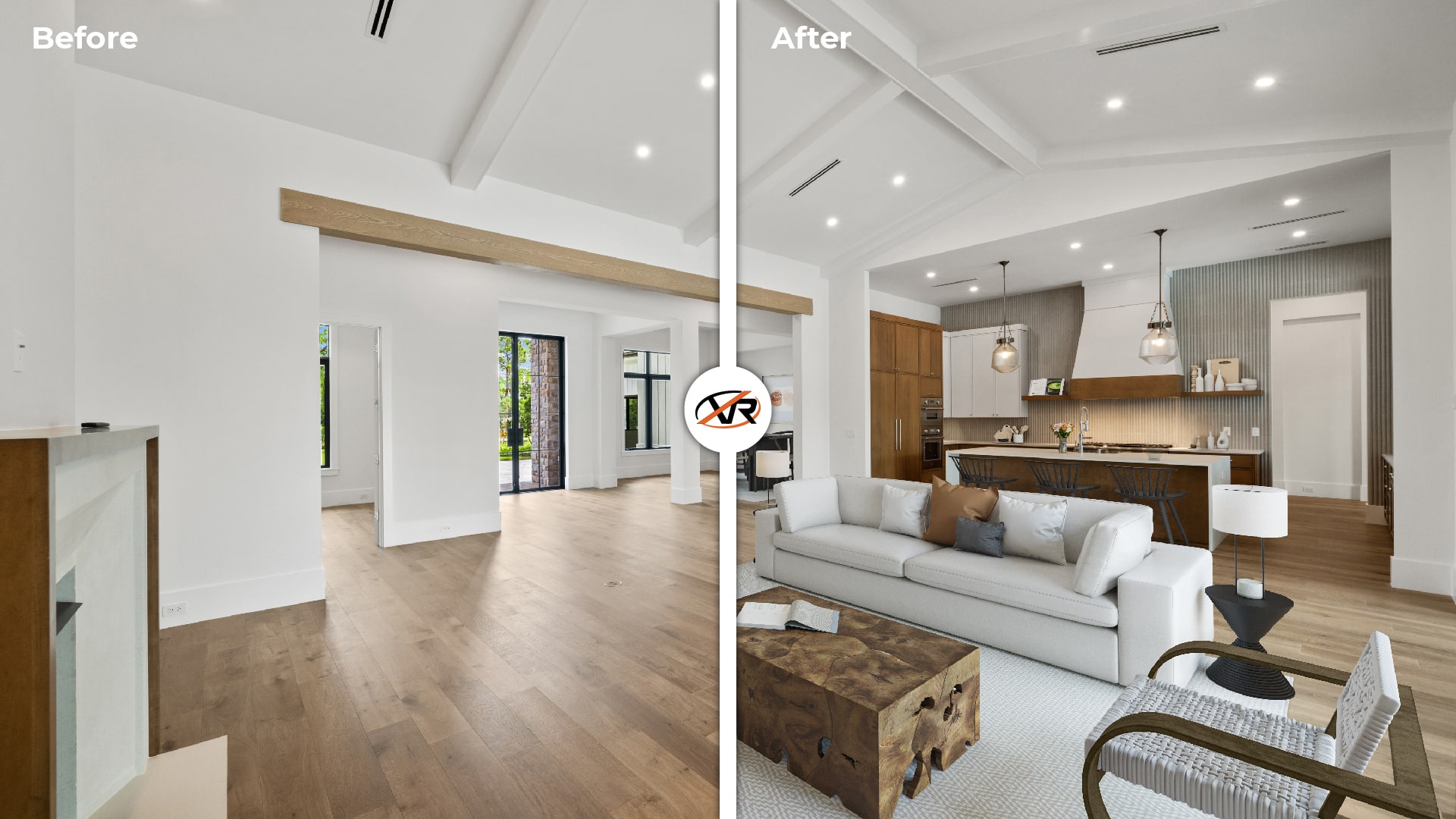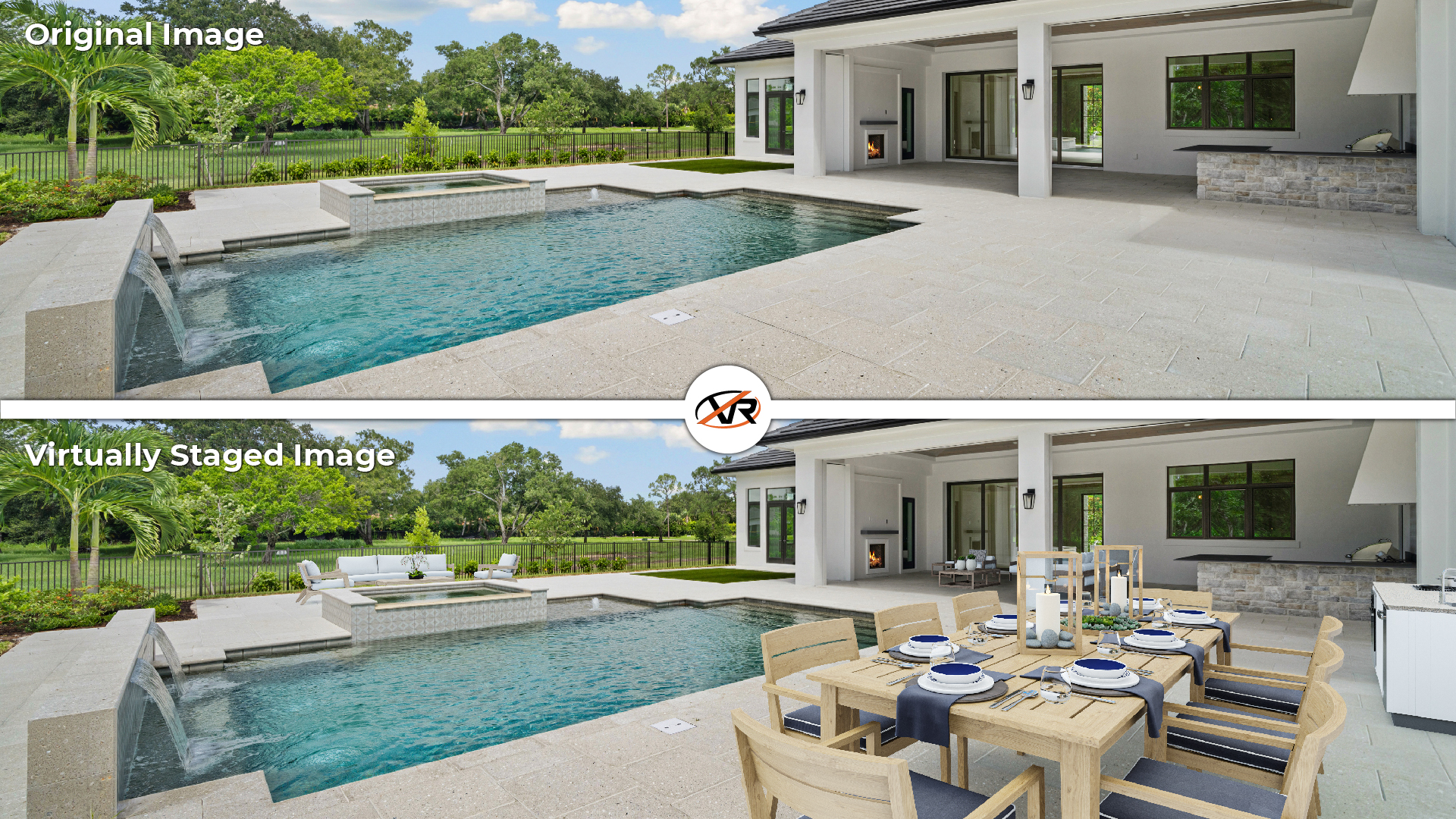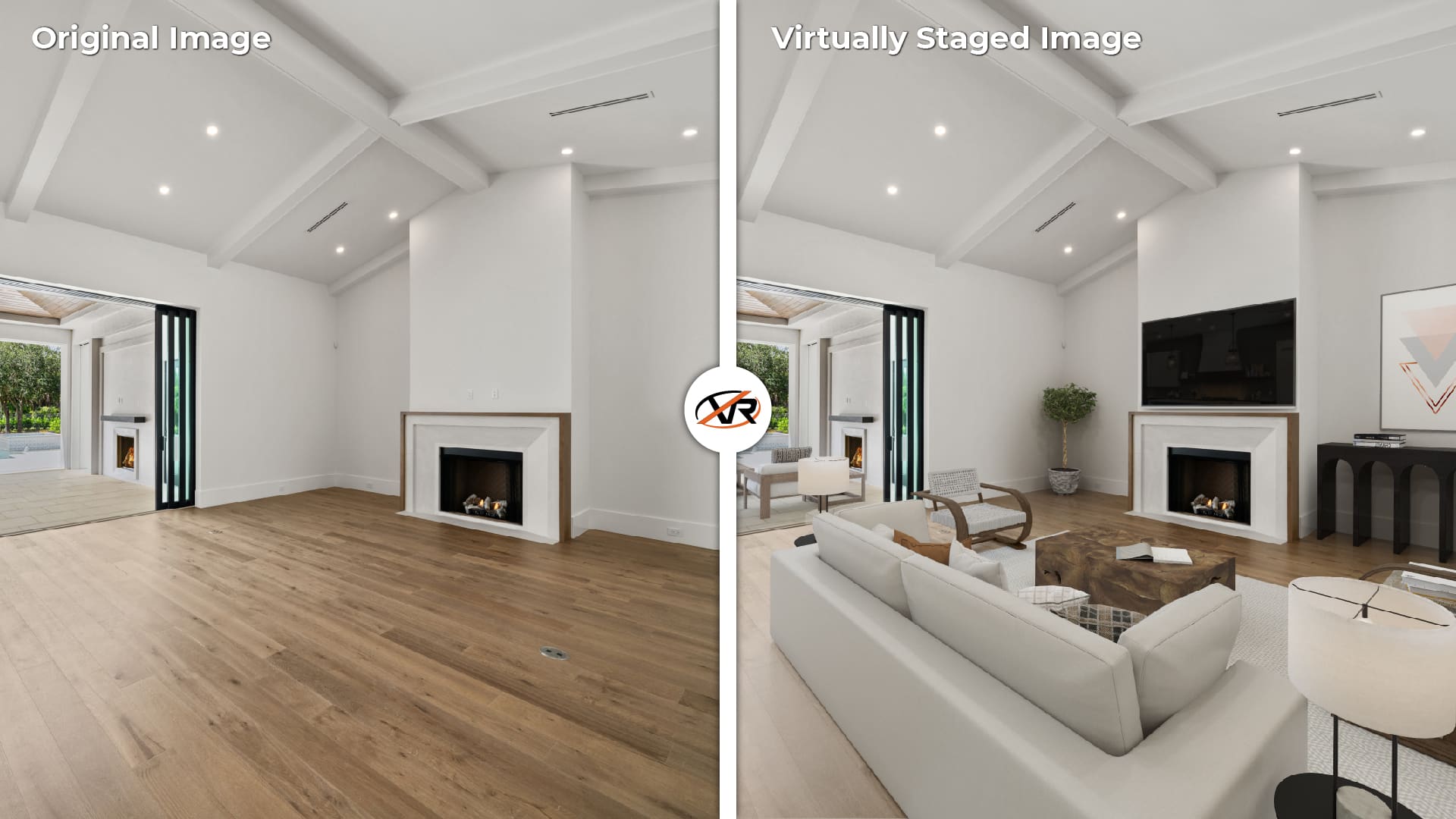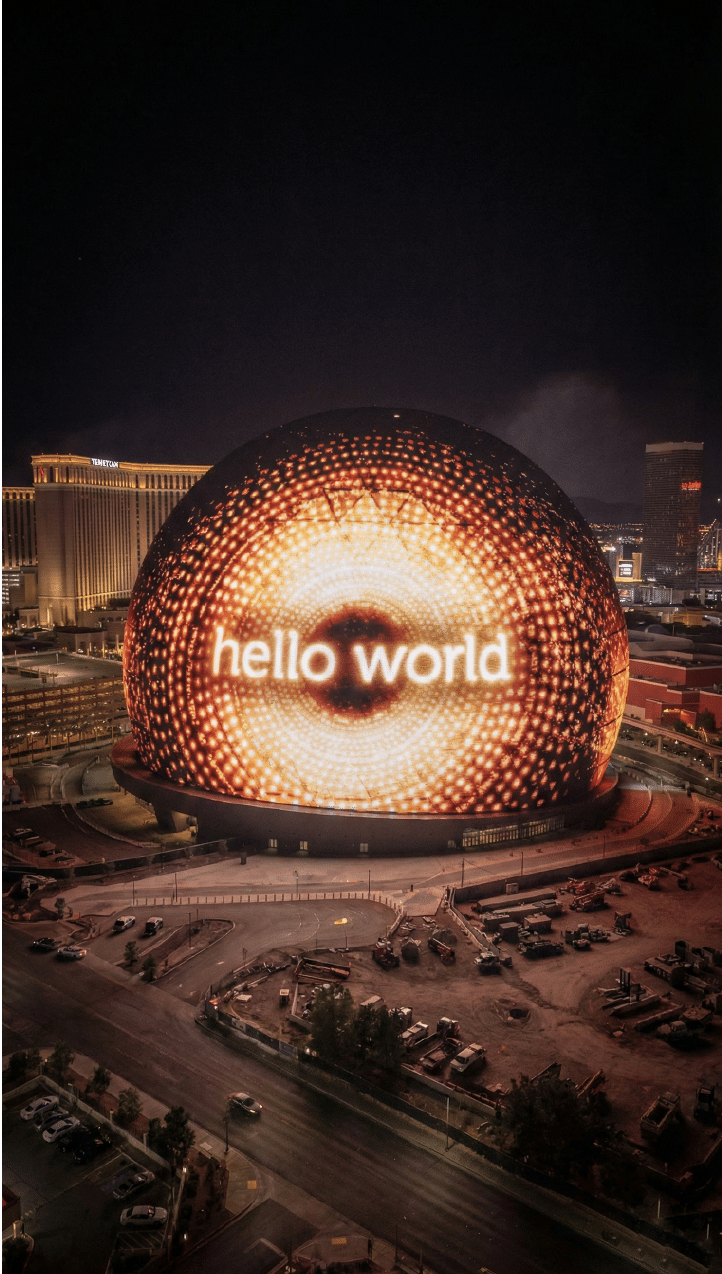Have you ever walked into a completely empty room and thought, “Hmm, this place could use a little couch… maybe a funky rug… or even a disco ball for a party vibe!”? Then you’ve probably caught yourself imagining the power of virtual staging—the ingenious technique that brings life to vacant property photos through digital furniture and decor. But what is virtual staging exactly? It’s just as magical as it sounds.
In this article, we’ll explore What Is Virtual Staging? in detail, discover why it matters for real estate, examine how it works, highlight its benefits compared to traditional home staging, and wrap up with some handy tips to ensure your staged images look stunning. So, grab a cup of coffee—or your favorite beverage—and let’s dive into the realm of visually captivating real estate marketing!

What Is Virtual Staging, Really?
First things first: What Is Virtual Staging? Virtual staging refers to the digital addition of furniture, decor, and other visual elements into photographs of empty or sparsely furnished properties. In short, it’s like your personal interior designer—minus the heavy lifting and without the fear of accidental hammer-to-thumb incidents.
By employing specialized 3D rendering software, professionals (like us at Xpress Rendering) transform otherwise bare rooms into inviting spaces that potential buyers or renters can envision as their future homes. The process is entirely virtual, which means no moving trucks, no scuffed floorboards, and no questionably colored couches that have seen better days—unless you want that look, of course.
Why Is Virtual Staging Important in Real Estate?
It’s no secret that real estate is a highly competitive industry. Properties regularly vie for attention across online platforms, property apps, and social media. Therefore, capturing a viewer’s interest within mere seconds is crucial. This is where virtual staging works its charm.
- Firstly, visually appealing rooms generate emotional responses. Potential clients can easily imagine themselves relaxing on that cozy sofa, sipping coffee at that tasteful dining table, or preparing a meal in that dream-like kitchen.
- Secondly, staged images stand out in listings. Plain photos of empty rooms might be scrolled past, but with well-placed furniture and strategic lighting, your listing has a better chance of stopping that potential buyer mid-scroll—talk about powerful marketing!
- Lastly, virtual staging helps real estate agents, developers, and home sellers save time and money. Traditional staging can involve transporting furniture, hiring a professional stager, and ensuring everything remains pristine during viewings. By contrast, digitally staging a property is typically more affordable, more adaptable (because you can easily change styles or layouts), and faster to implement.
How Does Virtual Staging Work?
After you understand “What Is Virtual Staging,” you might be thinking, “This sounds too good to be true! What’s the catch?” Good news: there is no catch. Instead, let’s break down the simple steps involved:
- Professional Photography
A professional photographer takes high-resolution images of the vacant property. Clear, well-lit photos form the foundation of successful virtual staging. In many cases, drone shots for exteriors or strategic angles for interiors may also be captured. - Digital Cleanup
Any existing decor or clutter is digitally removed if it doesn’t fit the desired look. Walls can be virtually repainted, flooring can be adjusted, and minor imperfections may be fixed to create a blank canvas. - 3D Modeling and Rendering
This is where the fun begins and where Xpress Rendering can help you. Specialized software is used to create realistic 3D models of furniture, decorative items, and even architectural elements such as exposed beams or custom light fixtures. - Placement and Styling
The 3D models are placed into the photos, matched with the correct angles, shadows, and lighting conditions. Want a Scandinavian look with neutral tones? Or perhaps something bold with striking colors? The choice is entirely yours. - Final Touches
After the staging is done, the images undergo color correction and any necessary retouching to ensure perfect consistency. Voila! The final photos are then delivered, usually in just a few days.

Benefits of Virtual Staging vs. Traditional Home Staging for Developers and Real Estate Agents
“Wait, so is virtual staging actually better than traditional home staging?” Let’s compare them head-to-head to see which approach best suits your marketing strategy:
- Cost Efficiency
- Virtual Staging: Only requires digital tools and expertise. Fewer logistical headaches, fewer labor hours, and often lower overall costs.
- Traditional Staging: Involves physical furniture, décor, and the hassle of shipping, moving, and ensuring the pieces remain in mint condition.
- Flexibility
- Virtual Staging: Changes can be made at the click of a mouse. Want to switch that mid-century sofa to a sleek contemporary couch? Go for it.
- Traditional Staging: Requires physically replacing furniture and décor. If tastes change, so does the budget.
- Time Savings
- Virtual Staging: Takes days, not weeks, for set-up. Plus, you don’t need to coordinate schedules with furniture delivery teams.
- Traditional Staging: Might require multiple site visits and can last for weeks, especially if you stage multiple rooms or entire homes.
- Customization
- Virtual Staging: Offers a limitless range of styles—modern, rustic, coastal, bohemian, you name it.
- Traditional Staging: Constrained by available furniture inventory and the space for on-site storage.
- Buyer Imagination
- Virtual Staging: Helps buyers visualize how the space could look with current design trends.
- Traditional Staging: Offers a real-life, physical walk-through, though typically limited to one set design.
In other words, virtual staging scores a home run when it comes to cost, efficiency, and style versatility. That being said, each method has its place, depending on client preferences, budget, and the type of property being showcased. But if you’re looking for maximum impact with minimal hassle, virtual staging is the way to go—no question about it.
The National Association of REALTORS® (NAR) also sheds light on the growing popularity of virtual staging in its article, “Will Virtual Staging Replace Traditionally Staged Rooms?”. According to NAR, many real estate professionals see virtual staging as a cost-effective and flexible alternative for showcasing properties, especially when traditional furniture staging isn’t feasible. While physical staging still has its place, the article points out that virtual staging often delivers a similar “wow factor” for prospective buyers—without the hefty price tag or logistical challenges.

Tips for Successful Virtual Staging
Although virtual staging might seem straightforward, a few best practices can ensure your final images look so real that even your mother might try to sit on the digitally added sofa:
- Use High-Quality Photos
Clear photos with good lighting are a must. Buyers (and algorithms) will appreciate crisp visuals that reduce confusion. This has been proven countless times by marketing experts… and by your own eyes, of course. - Keep It Realistic
Overstuffing a room with too many items can look cluttered and unrealistic. Strike a balance by selecting just enough furniture and décor to showcase the space’s potential. More minimal stages can actually spark greater imagination. - Match the Interior Style
If the property leans industrial or has a modern aesthetic, opt for furniture and decor that complement those features. A mismatch between architectural elements and staged décor will raise eyebrows in a way that isn’t helpful. - Leverage Social Media
Sharing your staged images on Instagram, Facebook, and LinkedIn will showcase your listings to a broader audience. By doing so, you’ll not only attract potential buyers but also establish your brand authority in the real estate market. - Work with Professionals
Expert virtual stagers (like our friendly team at Xpress Rendering) know the nuances of color balance, lighting, and angles. Hiring trained professionals ensures your final product wows potential clients every time.
How Can Virtual Staging Improve Your Real Estate Selling Strategy?
Now that you know What Is Virtual Staging? and how it can revolutionize your real estate marketing, you’re probably excited to get started. Whether you’re a real estate agent, developer, or an architect, implementing virtual staging can directly influence how quickly and successfully you sell properties.
You might also be thinking, “Alright, you sold me. What’s next?” Well, let me share some good news. At Xpress Rendering, we specialize in virtual staging services that are tailored to reflect your project’s unique style and capture the hearts of potential buyers. If you’d love to see more of what we do, don’t hesitate to check out our Virtual Staging Services to learn how we can breathe life into your property listings.
By embracing virtual staging, you’ll not only showcase properties in their best possible light but also tap into a marketing strategy that sets you apart. Plus, if you’re intrigued by the impact of visual storytelling, remember to explore our piece on How Can Animations for Real Estate Boost Property Sales? and discover how 3D animations can elevate your listings even further.
We hope this article that explain “What Is Virtual Staging in Real Estate and How Does It Work?” has ignited new ideas for your next listing. After all, in an ever-changing real estate market, staying innovative and forward-thinking isn’t just good for business—it’s also a whole lot of fun. Feel free to share your thoughts or experiences with virtual staging on social media, and keep exploring new ways to captivate homebuyers in the digital realm. Happy staging!


